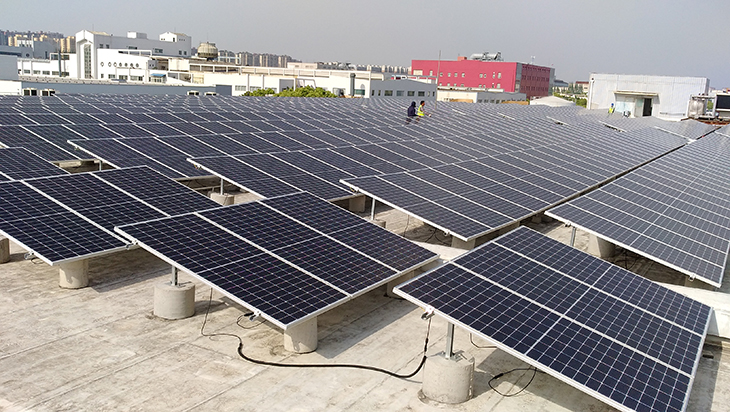Tackle Greenhouse Gas (GHG) emissions
Increase use of renewable energy
In order to combat global climate change, YKK commits to greenhouse gas emissions reduction targets that are required to meet the goals of the Paris Agreement – to limit global warming to well below 2°C above pre-industrial levels and pursue efforts to limit warming to 1.5°C.
Goals
Reduce emissions of CO2 and other greenhouse gases in our company and supply chain.
- Scope 1, 2: 50% reduction by 2030 (from a 2018 baseline year)
- Scope 3: 30% reduction by 2030 (from a 2018 baseline year)
Be carbon neutral by 2050.
Topics
Tackle GHG Emissions / Increase Use of Renewable Energy
Reduced energy use from the shutdown of some of our overseas business companies due to the global spread of the COVID-19 pandemic resulted in the significant reduction of GHG emissions by YKK in FY2020. Amid such circumstances, we continued to engage in energy conservation activities, such as the updating of production facilities and the introduction of highly efficient equipment. In China, preparations are underway for the introduction of solar power generation, with a new 2,144 kW capacity scheduled to come online in FY 2021. In Europe, there was an increase in our plants achieving 100% renewable energy purchasing. This brings the total number of plants worldwide that procure 100% renewable electricity to 10. Meanwhile, GHG emissions reduction of approximately 10,400 tons is expected from increased sales of the NATULON® zipper series, which uses recycled materials and is contributing to the reduction of Scope 3 GHG emissions.

GHG Emissions in FY2020
Scope 1, 2 GHG emissions: 459,639 tons (20% reduction from a 2018 baseline)
Scope 3 GHG emissions: 539,892 tons (36% reduction from a 2018 baseline)
Science Based Targets Initiative Approves YKK’s GHG Reduction Targets
YKK Corporation’s emissions reduction targets were approved by the independent Science Based Targets initiative (SBTi) as consistent with levels required to meet the goals of the Paris Agreement – limiting global warming to well-below 2°C above pre-industrial levels and pursuing efforts to limit warming to 1.5°C.
Related News